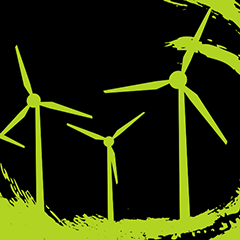Although there’s currently just a solitary turbine operating off the American coastline, Cape Wind has finally gotten the green light, which means that the next 12 months are crucial for the continent’s offshore industry. PES investigates if it’s up to the challenge…
In June this year, after years of offshore wind power projects being cancelled in the United States, the first offshore wind turbine began turning off the U.S. coast. The turbine was not a 400-foot monster off of Massachusetts, Rhode Island, New Jersey, or Texas – all places where projects had long been proposed. Instead, it was installed in Castine Harbor, Maine, rising only 60 feet in the air and featuring a 20-kilowatt capacity – enough to power only a handful of homes.
Nevertheless it was a turbine – finally. Offshore wind power in the U.S. has struggled mightily to rise from the waves, even as other renewable energy industries have steadily grown. The country now has more than 60,000 megawatts of onshore wind, but still just the lone offshore turbine, a pilot project run in part by researchers at the University of Maine. Meanwhile, Europe has left the U.S. far behind, installing its first offshore turbine in 1991 and growing rapidly in the past decade. To date, the countries of the European Union have built 1,939 offshore turbines with 6,040 megawatts of capacity.
Is the U.S. offshore wind industry finally about to get off the ground? Offshore wind carries impressive electricity-generating potential, and several projects seem poised to get underway. But energy analysts say the industry still faces daunting hurdles, most notably the higher cost of building offshore wind farms, the expense of connecting them to the onshore grid, and the lack of the comprehensive government incentives and renewable energy targets that have been crucial in accelerating the growth of Europe’s offshore wind energy sector.
On the positive part of the equation, the infamous Cape Wind project, which has been mired in legal battles for more than a decade, plans to start construction next year. With hopes to construct 130 turbines in the shoals between Nantucket and Cape Cod, Cape Wind has faced down enormous legal struggles because of opposition from local residents concerned that the turbines would spoil the region’s natural beauty and harm seabird populations. But its legal battles are now mostly behind it, and Cape Wind has power-purchase agreements in place. The wind farm’s developer, Jim Gordon, believes the project will eventually be able to supply about 75 percent of the electricity needs of Cape Cod, which has a year-round population of 215,000.
Meanwhile, the Obama administration and the U.S. Department of the Interior have been aggressively moving to streamline permitting processes for offshore wind farms, and this summer completed the first two auctions for large offshore parcels for wind development off the East Coast. Rhode Island-based Deepwater Wind – owned in part by investment firm D.E. Shaw and by First Wind, a Boston-based developer – won the first-ever offshore wind auction held by a division of the Interior Department known as the Bureau of Ocean Energy Management (BOEM). With its winning $3.8 million bid, Deepwater Wind now holds the wind power rights to 165,000 acres off the coasts of Rhode Island and Massachusetts.





























